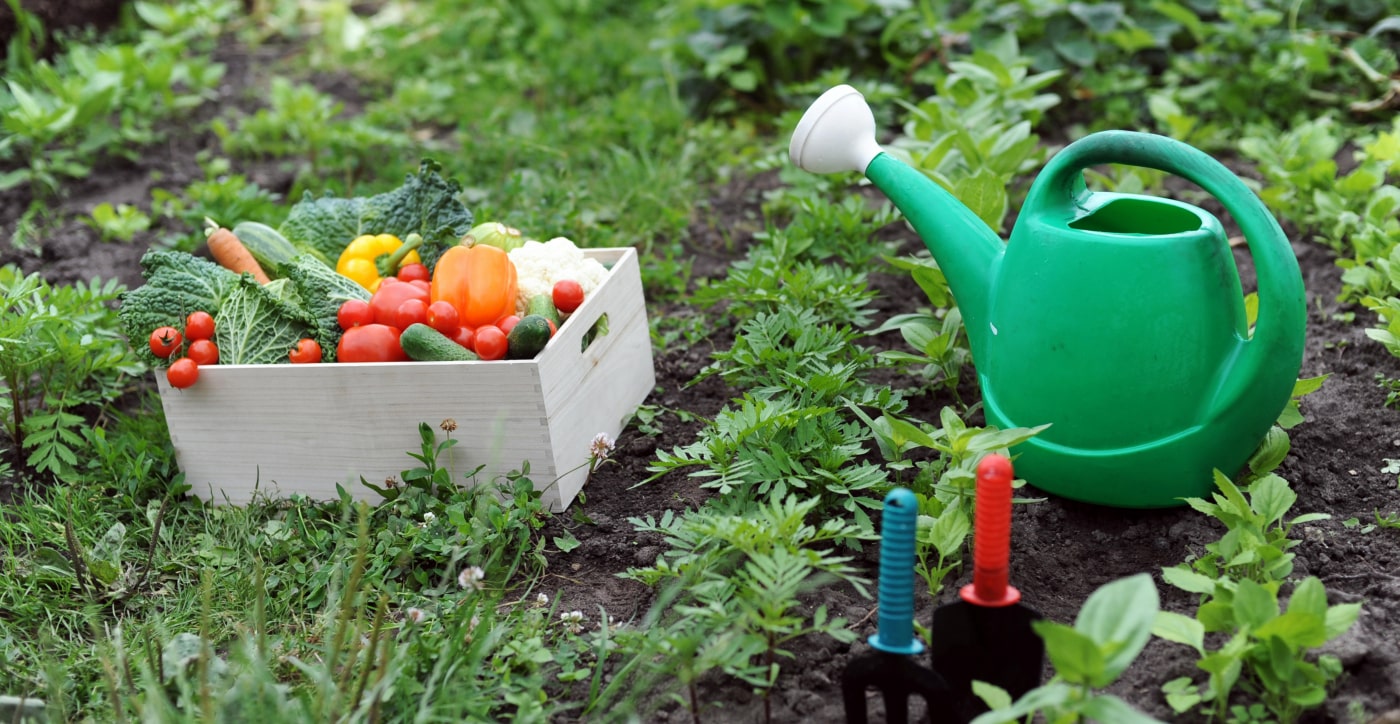
The organic kitchen garden. Part 2: preventive work
Organic gardening. Just stop watering and you're done, you might think. However, there is more to it than just stopping watering, although that does not mean it has to be more difficult. In this series of articles, we simply discuss how you can start an organic vegetable garden yourself. Today, we will give you tips on how to be as preventive as possible. After all, prevention is always better than cure, and this applies all the more to the vegetable garden!
Avoiding insect pests 🐛
How can we prevent insect pests from eating our crops
- The first thing you can do is make sure there is enough biodiversity in your garden. Each plant species has specific predators that target the plant. However, the enemies of these predators are not always species-specific. For example, an aphid that only lives on black alder can be eaten by ladybirds or lacewings, which eat all the aphids. These aphids can also damage your lettuce or cabbage.
- Flowering plants, on the other hand, allow the predatory insects to survive in your garden for a while without a large supply of food. They then eat pollen to bridge leaner periods. Insect hotels also offer them a place to hide. Nesting boxes for tits and earwigs can also help keep pest pressure down to prevent outbreaks. In the organic garden, it is crucial to keep the balance. You can never completely avoid pests but with these measures they will not occur in large quantities, and therefore ruin your harvest.
A good crop rotation 🍅
-
Apart from pests, there are also diseases that can affect our crops. We take a preventive approach by applying a good crop rotation. This prevents recurring diseases in the soil and also soil fatigue.
- In addition, each plant is given a place that is suited to it in terms of fertilisation. Some crops need more nutrition than others, and this may or may not make them more susceptible to diseases.
- Also respect the planting distances. Especially plants that are sensitive to moulds, such as potato and tomato plants, should be placed sufficiently far apart. This prevents a humid crop, which would give the late or tomato bright (Phytoftora) has less chance to develop.
Click here to read some tips on how to avoid the late blight.
- You can also spray lava flour. This flour absorbs excess moisture and makes the plant cells firmer. It also provides the plants with minerals, and the fine dust clogs the breathing tubes of insects such as aphids. These insects will find it difficult to absorb oxygen and will therefore not become a pest.
Homozygous or hybrid seeds? 🌱
You can avoid many problems by choosing a suitable vegetable bed for your garden. However, this is easier said than done. It is often a question of trying out different varieties before you know which ones will do well in your garden.
We can make a distinction between homozygous varieties and F1-hybrids:
- F1-hybrids:
The latter is a cross between two varieties. They are very good growers, often very disease resistant and give a good harvest. The only disadvantage is that you cannot reuse the seeds of these varieties. So you will have to buy new seed every time, and they are a bit more expensive because of the extra work that goes into them for the grower, but then you have something.
- Homozygous varieties:
Homozygous varieties are a bit more variable when it comes to emergence, growth and yield. Yet there can be excellent varieties among them. With homozygous varieties you can select the best crops to grow on. Make sure that the different varieties do not cross-pollinate each other if you want to harvest your own seeds. Otherwise you will sow a completely different plant than you had in mind. Personally we recommend the F1-hybrids for the best yield.
Want to read more about the organic vegetable garden? 👇
More info? Receive all our gardening tips directly in your mailbox!
We'll only email you handy facts, green advice and our best promotions & discounts. You'll receive it about once a week and you can unsubscribe at any time. No spam, promise 🤞











